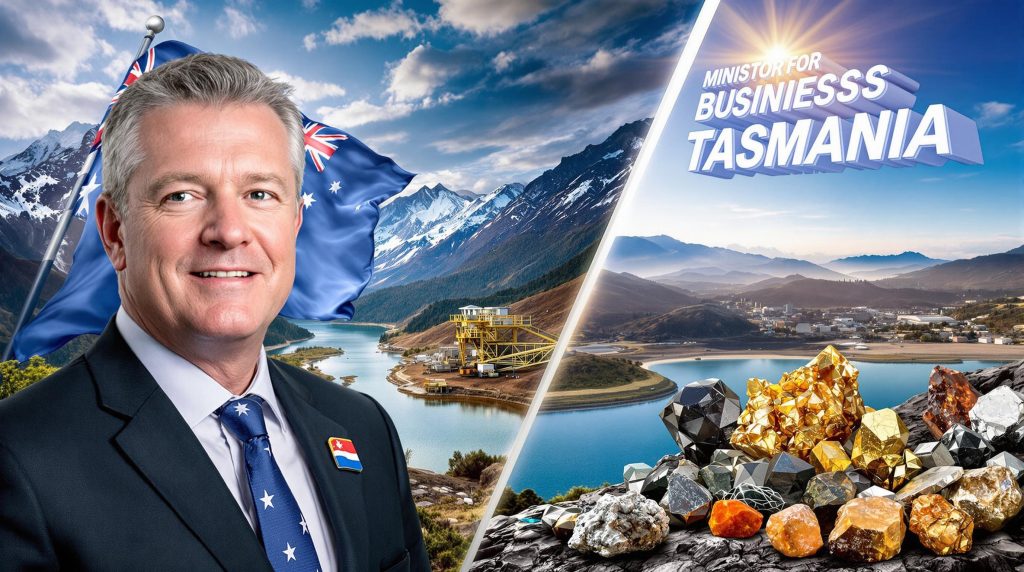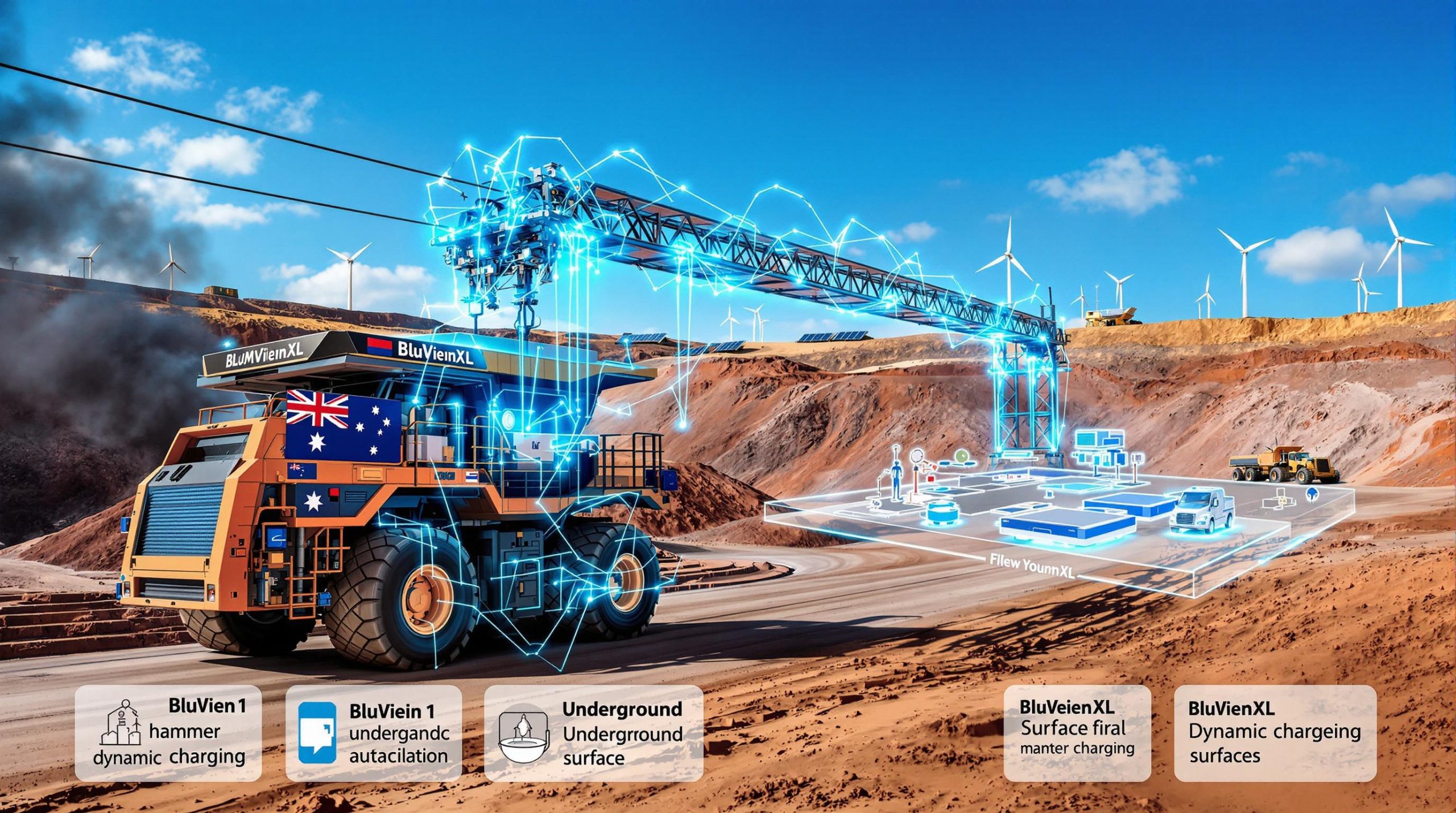Tasmania's Cabinet Reshuffle: What You Need to Know
Felix Ellis has been reappointed as Tasmania's Minister for Resources following Premier Jeremy Rockliff's cabinet reshuffle. The portfolio has been renamed to "Business, Industry and Resources," signaling a broader economic focus for the role. This strategic renaming highlights the government's intention to integrate resource management with broader business and industrial development initiatives across the state.
Ellis previously held the Resources portfolio from July 2022 to April 2024, bringing valuable continuity and experience to the position. His return to the role suggests the Premier's confidence in his ability to navigate the complex challenges facing Tasmania's resource sector.
Premier Jeremy Rockliff described his new Cabinet as having a "wealth of experience to deliver on the things that matter most to Tasmanians," emphasizing his government's commitment to "getting on with the job for Tasmanians" following the recent election.
What other responsibilities does Ellis hold?
Beyond his resources duties, Ellis will continue serving as the Minister for Skills and Jobs as well as Police, Fire and Emergency Management – both positions he has held since July 2022. This combination of portfolios reflects the government's integrated approach to economic development and public safety.
The pairing of resources with skills and jobs portfolios is particularly strategic, as it allows for coordinated policy development addressing both industry needs and workforce development. This approach acknowledges the critical relationship between resource development and creating skilled employment opportunities for Tasmanians.
Ellis expressed he was "humbled to be re-appointed" to these portfolios for the next four years, signaling his commitment to continuing the work begun during his previous tenure.
What is Ellis's background in Tasmanian politics?
First elected to Parliament in August 2020, Felix Ellis has rapidly ascended through the ranks of the Tasmanian Liberal government. His swift rise from backbencher to multiple ministerial roles in less than two years demonstrates both his political acumen and the confidence party leadership has placed in his abilities.
Prior to entering politics, Ellis worked in the forestry industry, giving him practical experience in one of Tasmania's traditional resource sectors. This background provides him with firsthand knowledge of the challenges and opportunities facing resource industries in the state.
His reappointment to multiple ministerial positions indicates Premier Rockliff's satisfaction with his performance during his previous tenure and suggests policy continuity rather than a significant shift in direction for Tasmania's resource management.
Other Key Cabinet Appointments
Nick Duigan will continue as the Tasmanian Minister for Energy and Renewables, maintaining his position that he has held since October 2023. This continuity in the energy portfolio complements Ellis's resources role, as both sectors are critical to Tasmania's economic development strategy.
The retained partnership between these two ministers suggests the government is focused on maintaining stability in policy direction across the interconnected resources and energy sectors. This approach recognizes the growing convergence between traditional resource extraction and renewable energy development, particularly as Tasmania positions itself as a renewable energy powerhouse.
Duigan's continued oversight of renewables is especially significant given Tasmania's ambitious renewable energy targets and its positioning as a clean energy leader within Australia. The state's abundant hydroelectric resources and growing wind power capacity represent key economic and environmental assets.
While other cabinet appointments were made during the reshuffle, the retention of both Ellis and Duigan in these complementary roles highlights the priority the Rockliff government places on resource and energy policy as central elements of their economic strategy.
Tasmania's Critical Minerals Strategy
Tasmania has been actively developing its critical minerals strategy, with the state government recently providing significant financial support to mining operations. The appointment of Ellis comes as Tasmania works to capitalize on its high prospectivity for several critical minerals that are essential to modern technologies.
The state's approach reflects a growing recognition that critical minerals represent a strategic opportunity for economic development while addressing global supply chain vulnerabilities in these essential resources.
What recent government support has been provided to mining operations?
The Tasmanian Government recently issued a $7.5 million loan to Group 6 Metals (G6M) to stabilize operations at the Dolphin tungsten mine on King Island. This followed an earlier conversion of a $10 million loan into equity, giving the state government a 12% stake in G6M.
This direct financial intervention demonstrates the government's willingness to take an active role in supporting strategic antimony financing and other critical mineral projects. The equity stake represents an unusual level of direct government investment in a mining operation, highlighting the perceived strategic importance of maintaining domestic critical mineral production capabilities.
The government's willingness to convert debt to equity also signals confidence in the long-term viability of the project despite short-term market challenges, showing a commitment to maintaining critical minerals production through market cycles.
Why is the Dolphin tungsten mine significant?
The Dolphin tungsten mine officially reopened in August 2023 after being closed for three decades. While the operation broke numerous monthly production records last year, it has recently faced challenges due to difficult global market conditions.
Tungsten is classified as a critical mineral due to its essential applications in specialized steel production, electronics, and defense technologies. The metal's extreme hardness, high melting point, and resistance to corrosion make it irreplaceable in many high-tech and defense applications.
As one of the few tungsten mines operating outside of China, which dominates global production, the Dolphin mine contributes to supply chain diversity for this strategic material. This diversity is increasingly valued by Western nations seeking to reduce dependence on Chinese mineral supplies.
The mine also provides significant employment opportunities on King Island, supporting the local economy in this remote part of Tasmania. This demonstrates how critical minerals projects can contribute to regional economic development while addressing strategic resource needs.
Tasmania's Critical Minerals Opportunities
Beyond tungsten, Tasmania has high prospectivity for several other critical minerals including lithium, titanium, and rare earth elements. These minerals are essential components in renewable energy technologies, electronics, and defense applications.
The state's geological diversity creates opportunities across multiple critical mineral categories, positioning Tasmania to potentially develop a diversified critical minerals sector rather than relying on a single commodity.
What critical minerals does Tasmania have high prospectivity for?
Tasmania's unique geology provides promising conditions for several critical minerals:
- Lithium – Essential for battery technology and energy storage systems
- Rare earth elements – Required for magnets in electric vehicles and wind turbines
- Titanium – Used in aerospace, medical implants, and high-performance applications
- Tungsten – Critical for specialized steel, electronics, and defense applications
The state's rich mining history has provided extensive geological data that aids in identifying potential critical mineral deposits. Modern exploration techniques applied to this historical data are revealing new opportunities in areas previously mined for other commodities.
Tasmania's compact geography and relatively well-developed infrastructure provide logistical advantages for developing new lithium mine developments and other critical mineral projects compared to more remote regions of Australia. This could translate to lower development costs and faster project timelines.
How does this fit into Australia's broader critical minerals strategy?
Tasmania's focus on critical minerals aligns with Australia's national strategy to become a major global supplier of these resources. As countries worldwide seek to secure supply chains for materials needed in clean energy transitions and advanced manufacturing, Tasmania's mineral resources represent a significant economic opportunity.
Australia has positioned itself as a reliable alternative supplier to China for many critical minerals, with federal policy supporting development of domestic processing capacity rather than simply exporting raw materials. Tasmania's efforts complement this national approach.
The federal government's Critical Minerals Strategy identifies securing supply chains for these minerals as a national priority, creating policy alignment between state and federal governments that could accelerate project development and investment.
This strategic alignment creates opportunities for Tasmania to access federal funding and support programs designed to accelerate critical minerals development across Australia, potentially giving the state's projects a competitive advantage.
Implications for Tasmania's Resource Sector
As the newly appointed Minister for Business, Industry and Resources, Ellis will need to navigate global market volatility, environmental considerations, and the need to attract investment to Tasmania's mining sector. Balancing economic development with sustainability will be a key challenge.
The resource sector faces both opportunities and challenges in the coming years, with critical minerals representing a potential growth area while traditional commodities continue to experience market fluctuations.
What challenges might the resources minister face?
The resources minister will likely confront several significant challenges:
- Market volatility – Critical minerals prices can fluctuate dramatically, as demonstrated by recent challenges at the Dolphin mine
- Environmental considerations – Balancing resource development with Tasmania's clean, green image and tourism economy
- Investment attraction – Competing globally for mining investment capital in an increasingly competitive market
- Community acceptance – Addressing concerns about mining impacts while highlighting economic benefits
- Value-adding opportunities – Moving beyond raw material exports to capture more value through processing
The minister will need to navigate these competing priorities while maintaining Tasmania's competitiveness as a mining jurisdiction. This balancing act requires both technical understanding and political skill.
Environmental considerations are particularly important given Tasmania's reliance on its natural beauty for tourism and its reputation for pristine wilderness. Any resource development strategy must address these concerns directly.
How might this appointment affect resource development in Tasmania?
The continuity provided by Ellis's reappointment suggests Tasmania will likely maintain its current approach to resource development, with continued government support for strategic mining projects, particularly those involving critical minerals.
This approach includes:
- Strategic financial interventions – As demonstrated by the G6M loans and equity investment
- Focus on critical minerals – Prioritizing minerals with strategic importance to modern technologies
- Integration with skills development – Using Ellis's dual portfolio to align workforce development with industry needs
- Balancing economic and environmental priorities – Maintaining Tasmania's environmental credentials while developing resources
The reappointment signals policy stability rather than a major shift in direction, providing certainty for industry stakeholders and investors. This continuity could help accelerate existing projects and initiatives.
Ellis's familiarity with the portfolio means less time will be needed for transition, allowing for more immediate action on pending decisions and policy initiatives. This could accelerate progress on strategic priorities identified during his previous tenure.
FAQ: Tasmania's Resources Sector
What is the current state of Tasmania's mining industry?
Tasmania has a diverse mining sector with operations focused on minerals including zinc, tin, copper, and increasingly, critical minerals. The state government has been actively supporting the development of strategic mining projects, particularly those involving minerals deemed critical for modern technologies.
The industry has experienced both successes and challenges in recent years:
- Established operations – Several long-running mines continue to operate profitably, particularly in the west coast region
- New developments – Projects like the Dolphin tungsten mine represent new investments in the sector
- Exploration activity – Ongoing mineral exploration insights are identifying new resource opportunities, especially in critical minerals
- Market challenges – Global commodity price fluctuations have impacted some operations, requiring adaptation
The sector benefits from Tasmania's relatively small size, which minimizes transport distances to processing facilities or export points, and from the state's reliable power supply, primarily from renewable sources.
How significant is mining to Tasmania's economy?
The mining and minerals processing sector is an important contributor to Tasmania's economy, particularly in regional areas. The government's investment in operations like the Dolphin tungsten mine demonstrates its recognition of the sector's economic importance.
Mining provides several economic benefits to the state:
- Regional employment – Creating skilled jobs in areas with limited alternative opportunities
- Export earnings – Contributing to the state's balance of trade through mineral exports
- Supply chain benefits – Supporting local businesses providing goods and services to mining operations
- Infrastructure development – Mining investments often improve regional infrastructure that benefits broader communities
- Government revenue – Through royalties, taxes, and in some cases direct investment returns
While smaller than tourism or agriculture in overall economic contribution, mining provides higher average wages and significant indirect economic benefits through its supply chains.
What are critical minerals and why are they important?
Critical minerals are elements essential for modern technologies, renewable energy systems, and defense applications that face supply chain risks. Tasmania's deposits of tungsten, lithium, titanium, and rare earths position the state to play a role in supplying these strategically important resources.
These minerals are considered "critical" for several reasons:
- Essential for key technologies – No viable substitutes exist for many applications
- Supply concentration – Production is often dominated by a small number of countries
- Geopolitical risks – Major producers may use supply as political leverage
- Processing bottlenecks – Refining capacity is often more concentrated than mining
- Growing demand – Clean energy transition is dramatically increasing demand for many of these minerals
For example, tungsten's exceptional hardness makes it irreplaceable in many cutting tools and specialized steel applications, while rare earth elements are essential for the powerful permanent magnets used in electric vehicles and wind turbines.
The strategic importance of these minerals extends beyond their economic value, as they are essential to energy security, defense capabilities, and technological sovereignty.
How does Tasmania's approach to resources compare to other Australian states?
Like other resource-rich states, Tasmania is working to develop its mineral resources while addressing environmental and community concerns. The state's focus on critical minerals aligns with broader national priorities to develop secure supply chains for these strategic resources.
However, Tasmania's approach has several distinctive elements:
- Direct equity investments – The state has shown willingness to take ownership stakes in strategic projects
- Targeted support – Focus on specific strategic minerals rather than broad industry support
- Integration with renewable energy – Leveraging Tasmania's clean energy advantage for minerals processing
- Smaller scale operations – Projects tend to be smaller than in states like Western Australia or Queensland
- Balanced development – Mining is positioned as one component of a diversified economy rather than the dominant sector
Tasmania's approach reflects its smaller size, more diverse economy, and different geological endowment compared to states like Western Australia, which are more heavily focused on bulk commodities such as iron ore.
The state's direct financial intervention in projects like the Dolphin mine represents a more hands-on approach than typically seen in larger mining states, reflecting both the strategic importance of these smaller projects and their more challenging economics compared to larger bulk commodity operations.
For investors looking to capitalize on these developments, there are significant mining investment opportunities emerging across Tasmania's resources sector as the new ministerial team implements its strategy.
Ready to Spot the Next Major Mineral Discovery?
Discovery Alert's proprietary Discovery IQ model instantly notifies investors of significant ASX mineral discoveries, transforming complex data into actionable insights before the broader market responds. Explore why major mineral discoveries can lead to exceptional returns by visiting the Discovery Alert discoveries page.




